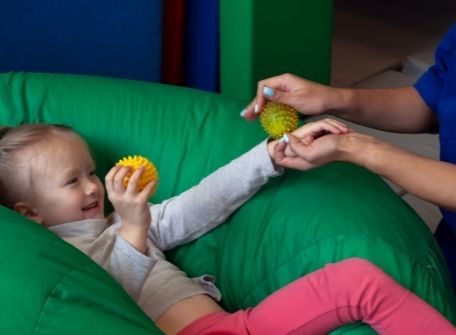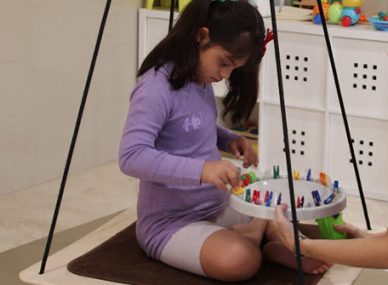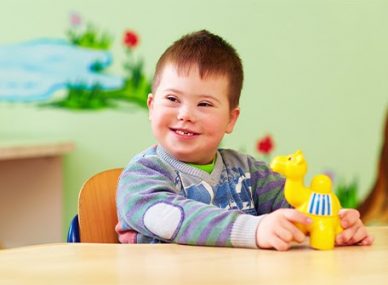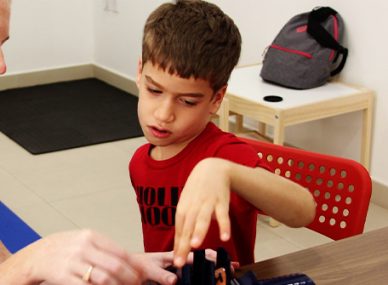The process through which we experience the world around us is known as sensory integration. We absorb information through our sensory organs and organise it on a higher level so that we may comprehend our surroundings and respond appropriately.
To summarise, sensory information is perceived, organised, modulated, and interpreted.
Most people are unaware that sensory processing problems can have an impact on:
- Behaviour
- Communication
- Function
- Effective engagement in everyday activities
When we hear a bee buzzing near our heads, we instinctively swat to avoid being bitten. We are alerted to the likelihood of a fire in the kitchen by the scent of burning, and we take action to avoid harm.
Our bodies are designed to protect us as well as process information so that we can function properly in daily life. We feel prepared and at ease in our surroundings when sensory integration is working properly.
Certain folks, on the other hand, don’t always interpret their sensory input correctly. Sensory processing disorder, or SPD, is the name given to this condition.
When you have SPD, life can be really difficult. If children have severe sensory overreactions, they may shut down and become completely disconnected from their surroundings.
Sensory Integration Therapy is the most popular technique for helping people with SPD.
What is Sensory Integration?
Sensory processing disorders impact one out of every twenty children, and the number continues to rise. More research is still going on to discover what causes Sensory Processing Disorder and how common it is (SPD).
SPD is a complex brain disease that causes trouble processing information from our senses. Sensory processing disorder is very common in people who simultaneously have developmental impairments. Sensory processing problems are quite common in people with autism spectrum disorders.
It’s vital to remember that there are more senses than the five we’re all familiar with.
Information is gathered from the following sources:
- Touch\Smell\Vision
- Hearing\Taste\Vestibular
- Organs of the body (interoception)
- Proprioceptive receptors are sensory receptors that allow us to feel our surroundings
Changes in location in space, balance, and movement are detected by vestibular receptors. Body awareness, position, and posture are all provided by proprioceptive receptors. Internal body regulating reactions like hunger, thirst, blood pressure, and even toileting desires are all part of interoception.
People are always sensory overload, which means they need to filter it out and must properly integrate the flow of information in order to make sense of it and produce an appropriate reaction. Sometimes the response we give does not match the information we’ve received.
When another student bumps against him in line, for example, a student may have a panic reaction. Another instance is when a student has discomfort when wearing clothing that has tags or seams.
What’s fascinating about sensory processing is that the majority of activities need us to mix data from many senses at the same time! You know just where to place your shampoo-filled hands when you close your eyes to wash your hair.
You use your fingers to rub in the shampoo and feel when your hair is soapy when you’re not looking. Tactile (touch), proprioception (position in space), and vestibular (balance so you don’t fall over with your eyes closed) are all used in this activity.
If a person becomes dizzy while her eyes are closed, she will have a tough time washing her hair since she must keep her eyes open and risk getting soap in her eyes!
What is Sensory Integration Therapy and How Does it Help?
For example, a child may seek therapy because he or she is having problems functioning in daily life. Her sensory difficulties cause her a lot of stress at home because she has trouble showering, dressing, and getting her hands and feet filthy.
The occupational therapy begins by evaluating the sensory system of the kid. Both the caregiver and the therapist fill out specially developed checklists to assess which systems are affected.
Occupational therapists employ sensory integration treatment as one of their techniques (OTs). OTs try to influence how the brain reacts to touch, hearing, sight, and movement by using enjoyable and play-based activities.
When one sensory area is overly receptive (hyperresponsive), another requires additional information (hyporesponsive). We all have defence mechanisms, but if a child’s tactile system is overly sensitive, he or she may experience pain or discomfort while touching anything sticky. The child may even stop behaving properly and start showing behavioral issues.
How to Find a Qualified Therapist for Sensory Integration in Dubai?
A skilled sensory integration therapist’s purpose is to help tease out SPD concerns in children, which can occur alone or in conjunction with a variety of medical, cognitive, and stress-related conditions. Sensory integration therapy, when done appropriately and if the child’s system responds well, can dramatically improve a child’s quality of life.
Fortunately, those who are looking for qualified therapists for sensory integration in Dubai may find these therapists easily at Hope AMC Medical Center in Dubai. In addition, you can also find it being one of the best pediatric medical facilities, covering both medical and rehabilitation aspects. Hope AMC has a team of highly qualified pediatric doctors and therapists under the same roof collaborating and addressing the full needs of each child individually as a team.
Call +971-529997075 to book your appointment TODAY!





